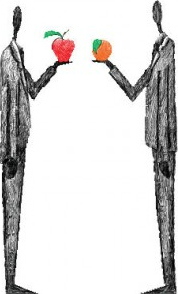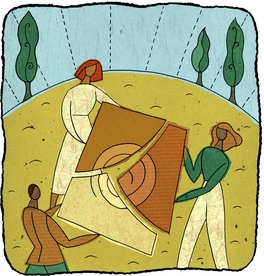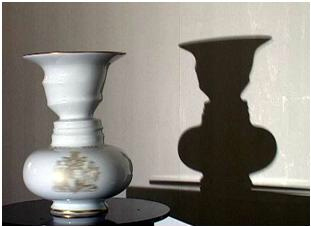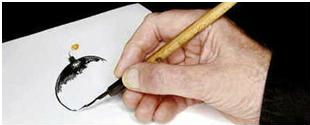Productive international relationships rest on sustained interaction and understanding between nations and peoples. Culture and the arts have played an enduring role in cultivating such mutual awareness and respect. But...
KEEP READINGThe CPD Blog is intended to stimulate dialog among scholars and practitioners from around the world in the public diplomacy sphere. The opinions represented here are the authors' own and do not necessarily reflect CPD's views. For blogger guidelines, click here.
Culture Posts: Exploring the Cultural Underbelly of Public Diplomacy
Welcome to the opening entry of Culture Posts, an interactive blog for exploring the cultural underbelly of public diplomacy. Over the next two years, I hope that you will join me, collecting and discussing your insights on the hidden, and often times not so hidden, aspects of culture in public diplomacy.
The Multiples faces of Culture
Culture, as an underlying force that shapes global public diplomacy, remains curiously unexplored. Most focus on the positive, visible side of culture. As a soft power resource, culture is often viewed as a product for export that can help improve a country’s image. In cultural diplomacy, culture is a vehicle for bringing people together. Culture helps build mutual understanding.
Yet, culture is like the well-known optical illusion that can appear to be a single vase or two, depending on one’s perspective. The image and the vase (The Queen’s Speech) reflect culture’s multiple meanings and hidden symbolism – there are 4 faces, including the profiles of Queen Elizabeth and Prince Phillip.
The implicit, unspoken side of cultural assumptions and expectations tend to generate mutual misunderstanding. These hidden aspects are the ones most likely to contribute to costly, ineffective public diplomacy initiatives that can do more harm than good.
Multiple Perspectives of Public Diplomacy
In public diplomacy, discussions of culture can be controversial, and spark debates between universalism and cultural variation. Controversy provides even more reason to explore culture.
Culture touches nearly every aspect of public diplomacy – from the ideas that actors select and try to communicate, to how that communication is perceived by global publics.

Originally, scholars of diplomacy maintained that principles of negotiations were “universal.” Raymond Cohen’s (U.S. Institute of Peace, 1991) landmark study demonstrated what seasoned diplomats instinctively knew, namely that Arab, Japanese and U.S. diplomats do not “negotiate” the same way or necessarily from the same premise. Cohen traced the distinctive styles and underlying philosophies to the differing cultural heritages.
The predominance of U.S. scholarship as a cultural force in public diplomacy cannot be underestimated. The screenshot of Wikipedia about U.S. dominance in public diplomacy was taken just this week.

While the U.S. may be a leader in the field, the U.S. perspective represents a mono-cultural perspective in what is undeniably a multicultural world. The dominance of the U.S. model may overshadow the rich contributions of other intellectual heritages to the vision of public diplomacy. In a world of global communication, what insights could be gained if we could view public diplomacy from multiple perspectives?
Future Trends: Culture’s Blessing or Curse
The need for cultural knowledge for public diplomats is likely to grow more urgent given the strengthening of two trends.
The first trend is the growing salience of cultural identity by publics. Public diplomacy inherently includes messages about how a party sees itself (identity) and the other (image). Albeit a two-sided equation, public diplomacy focuses primarily on how a nation or sponsor can protect or promote its own image.
However, publics tend to have similar identity needs. Violations of a public’s cultural identity can elicit strong reactions. The 2005 Danish ‘cartoon’ incident is a powerful example. The strategies that public diplomats use to navigate the dynamics of cultural identities and media representations rest on cultural awareness and knowledge.
A second trend is the move toward collaborative public diplomacy to tackle complex “wicked” problems. The recent mantra of relationship-building, networking, partnerships, and engagement are part of the vocabulary of collaboration. Collaboration in public diplomacy may well become the strategic equivalent of negotiation in traditional diplomacy.

At the heart of collaborative public diplomacy is the ability to get people of diverse backgrounds to work productively together. Researchers are finding that cultural diversity is the greatest source of friction – and synergy – in collaboration. A public diplomat’s cultural awareness and knowledge will determine whether she is able to invoke culture’s curse or blessing.
Cultural similarities, differences, paradoxes … your ideas for a Culture Post?
In the months ahead, I hope that you will join me on a journey to explore the cultural underbelly of public diplomacy in Culture Posts. Each month Culture Posts will highlight themes that range from listening to multicultural perspective-taking, to power and proverbs, to cognitive styles and website design.
With the addition of your insights and perspectives to Culture Posts, we can help create a forum for collecting, sharing and discussing the many cultural similarities, differences, and even cultural paradoxes found in global public diplomacy. In fact, we are looking for an image to represent “Culture Posts” or “the cultural underbelly of public diplomacy,” please share your idea!
Visit CPD's Online Library
Explore CPD's vast online database featuring the latest books, articles, speeches and information on international organizations dedicated to public diplomacy.
POPULAR ARTICLES
-
November 3
-
November 5
-
November 13
-
November 25
-
November 17
Join the Conversation
Interested in contributing to the CPD Blog? We welcome your posts. Read our guidelines and find out how you can submit blogs and photo essays >.
















